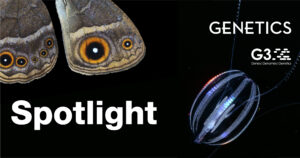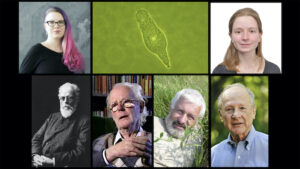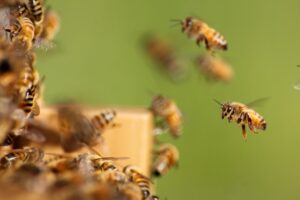Enter your address to receive notifications about new posts to your email.
Science & Publishing
-
Science & Publishing
GENETICS articles recognized with Editors’ Choice Awards
Congratulations to the winners of the Editors’ Choice Awards for outstanding articles published in GENETICS in 2021! The journal’s Editorial Board considered a diverse range of articles, finding many papers worthy of recognition. After much deliberation, they settled on one exceptional article for each of the three award categories: molecular genetics, population and evolutionary genetics,…
-
Science & Publishing
New editors are joining G3
G3: Genes|Genomes|Genetics is pleased to announce two new editors: Siu Sylvia Lee and Minou Nowrousian. Siu Sylvia Lee Senior Editor Siu Sylvia Lee is a Professor in the Department of Molecular Biology and Genetics at Cornell University. She received a BA in Biochemistry from Rice University in 1995 and a PhD from Baylor College of…
-
Science & Publishing
For this human pathogen, agriculture may be a source of antifungal resistance
Aspergillus fumigatus isolated from clinical settings is resistant to agricultural fungicides. Infections have long been a deadly problem for hospital patients. Though modern medicine has an impressive array of antimicrobial drugs at its disposal, pathogens continue to evolve resistance, creating ever more dangerous infections as the microbial “arms race” escalates. Overprescribing of antibiotics is one…
-
Science & Publishing
2022 Genetics Society of America Medal: Margaret Fuller
Complex multicellular organisms have mastered the art of specialization; embryonic stem cells give rise to a multitude of different cell types that perform specific functions. Later, adult stem cells dedicated to specific tissues maintain and repair many organs in the body throughout life. Some specialized cell types, like skin, blood, lining of the intestine and…
-
Science & Publishing
Diet affects genetic crossover frequency in mice
Meiotic recombination in a commonly used laboratory mouse strain showed sensitivity to dietary changes. Recombination within the germline is a tightly controlled process. But new research suggests that nutrition may introduce some variability into this crucial step in genetic transmission, which could have implications for the design of future genetics studies. A study published in…
-
Science & Publishing
A year in review with GENETICS Editor in Chief Howard Lipshitz
Howard Lipshitz reflects on his first year as Editor in Chief at GENETICS.
-
Science & Publishing
New GENETICS Associate Editors
GENETICS is pleased to announce five new Associate Editors have joined the Editorial Board. Cellular Genetics Mike Boxem Utrecht University Mike Boxem studies the polarization and organization of epithelial cells using C. elegans as an animal model. He received his training in genetics and developmental biology as a PhD student, working on the control of cell division…
-
Science & Publishing
An evolutionary scandal ends
Guest post by Charles H. Langley. Dic, hospes, doctis caelebs animalculum obisse hicque iacere physis legibus conveniens. (Stranger, tell the learned that the celibate little animal has passed away, and lies here, conforming to the laws of nature.) —John Rundin, with apologies to Simonides and Cicero Thirty-five years ago, in a celebrated News & Views…
-
Science & Publishing
Ctenophore genome assembly combed for evolutionary clues
Scientists generated a karyotype, chromosome-scale genome assembly, and manual genome annotation for a common ctenophore. Ctenophores—beautiful marine invertebrates also known as “comb jellies”—have long fascinated and perplexed biologists. Phylogeneticists believe that either ctenophores or sponges were the first organisms to branch off from the tree of life, making them the “sister clade” to all other…
-
Science & Publishing
As New Zealand’s endangered kākāpō rebounds, researchers measure genomic signs of inbreeding
Efforts to diversify an inbred population must take into account the genetic backgrounds of the founders. A female kākāpō named Rimu, whose parents are both Stewart Island founders.Photo by Jake Osborne. The nocturnal flightless parrot known as the kākāpō was once abundant throughout New Zealand. But after the introduction of mammalian predators, the species all…
-
Science & Publishing
Honey bee social behaviors and the long hunt for genetic factors
Researchers used a forward genetic approach to identify genes that affect a social behavior in honey bees. For more than 30 years, honey bee geneticist Robert E. Page, Jr. and his colleagues have sought the genes that influence a colony trait that only emerges from interactions between thousands of individual bees — a social phenotype.…











